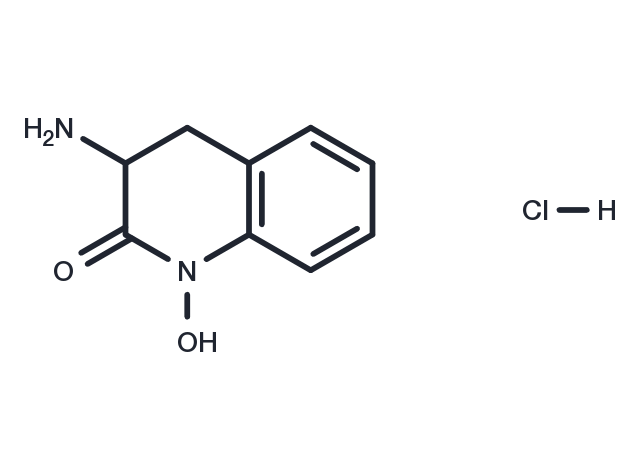Powder: -20°C for 3 years | In solvent: -80°C for 1 year


PF-04859989 HCl is a brain-penetrable and irreversible inhibitor of kynurenine amino transferase II (KAT II), which is the enzyme responsible for most of the brain synthesis of kynurenic acid.

| Pack Size | Availability | Price/USD | Quantity |
|---|---|---|---|
| 1 mg | In stock | $ 30.00 | |
| 2 mg | In stock | $ 44.00 | |
| 5 mg | In stock | $ 70.00 | |
| 10 mg | In stock | $ 116.00 | |
| 25 mg | In stock | $ 226.00 | |
| 50 mg | In stock | $ 363.00 | |
| 100 mg | In stock | $ 565.00 | |
| 200 mg | In stock | $ 682.00 | |
| 1 mL * 10 mM (in DMSO) | In stock | $ 70.00 |


| Description | PF-04859989 HCl is a brain-penetrable and irreversible inhibitor of kynurenine amino transferase II (KAT II), which is the enzyme responsible for most of the brain synthesis of kynurenic acid. |
| Targets&IC50 | KAT II:23 nM(human), KAT II:263 nM(rat), KAT I:22 μM, KAT IV:>50 μM, KAT III:11 μM |
| In vitro | The IC50s values are 23 and 263 nM for hKAT II and rKAT II. PF-04859989 HCl is selective for KAT II over human KAT I, KAT III, and KAT IV (IC50s of 22, 11, and >50 μM, respectively)[3]. |
| In vivo | Acute administration of the KAT II inhibitor PF-04859989 (5 or 10 mg/kg) was associated with a short-onset, time-dependent decrease in firing rate and burst activity of DA neurons, both parameters reaching a 50% reduction within 45 min. Furthermore, PF-04859989 reduced the number of spontaneously active DA cells as measured 4-6 after administration. Pretreatment with d-cycloserine (30 mg/kg) or CGP-52432 (10 mg/kg) prevented the inhibitory action of PF-04859989 (5 mg/kg) on firing rate and burst firing activity. In contrast, pretreatment with methyllycaconitine (MLA, 4 mg/kg) did not change the response, whereas picrotoxin (4.5 mg/kg) partially prevented the inhibitory effects of PF-04859989 (5 mg/kg, i.v.)[2]. |
| Synonyms | PF 04859989, PF04859989, PF-04859989HCl, PF-04859989 |
| Molecular Weight | 214.65 |
| Formula | C9H11ClN2O2 |
| CAS No. | 177943-33-8 |
Powder: -20°C for 3 years | In solvent: -80°C for 1 year
DMSO: 100 mg/mL (465.87 mM)
H2O: 100 mg/mL (465.87 mM)
You can also refer to dose conversion for different animals. More
bottom
Please see Inhibitor Handling Instructions for more frequently ask questions. Topics include: how to prepare stock solutions, how to store products, and cautions on cell-based assays & animal experiments, etc.
PF-04859989 HCl 177943-33-8 Others disorders schizophrenia PF 04859989 Inhibitor inhibit PF04859989 HCl midbrain psychiatric PF 04859989 HCl dopamine PF04859989 neurons PF-04859989HCl PF-04859989 cognitive ,impairment inhibitor
